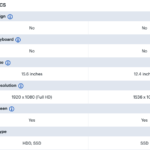As e-commerce moves into its second decade of its existence, B2B distributors, both those that are already digitally enabled and traditional distributors that are just starting to make the move, need to figure out a better way to help their customers find what they need to buy, according to Jason Hein, principal B2B strategist at Bloomreach.
Speaking at MDM’s Digital Distributor Summit late last month, Hein said that distributors needed to compete in an increasingly crowded field by offering a better customer experience. Currently, there’s an e-commerce tragedy happening, according to Hein.
“We have this problem in that there are an awful lot of distributors who are now trying to go online,” Hein said. “They put all of this product up on their websites, but they’re not getting any customer engagement. How do you figure out a way to get your customers to find what they need to buy?”
Buyers are now more digital savvy
With customers forced to buy more products online due to the pandemic last year, there has been an acceleration in the rate at which buyers are going online first to find products, Hein said. Distributors, such as Fastenal, MSC Industrial Supply Co. and Grainger, that already had a digital online presence saw solid returns on their investments in 2020. At the same time, most traditional distributors quickly pivoted to getting their products online.
“We’ve got a lot more buyers using digital than we did,” Hein said. “But with more buyers using it, those buyers are starting to have higher expectations for the sites that they use. They’re less willing to put up with things that don’t work, sites that aren’t responsive and sites that aren’t tuned to what they’re trying to figure out.”
Buyers now know there are a lot of lot of other sources out there that they can use, and the switching cost for finding a new distributor is a lot lower now than it was before with the move to digital.
“Those digitally native distributors are gaining traffic really quickly,” Hein said. “And when they get more traffic and users, it’s sort of sort of supporting that first point: Now we’ve got even more buyers using e-commerce sites.”
Hein said a good customer experience means that buyers can navigate a distributor’s website to find the products that they need. Competing on price will lead to a short-term boost, but traditional distributors don’t typically compete on price offline. Competing on price also leads to “a race to the bottom,” according to Hein. Distributors should instead compete on customer experience. Hein said a good customer experience means that buyers can navigate a distributor’s website to find the products that they need.
Along similar lines, competing on selection — where a distributor adds more skews — could increase costs faster than revenues.
“What I ask of you is being answered and responded to in a way that makes sense to me,” Hein said of discovery and contextualization. “It’s really important right now that traditional distributors and digital distributors find a way to break away from this pack.
“What I’m talking about these days, when I’m talking to people in the space, is how important it is to compete on experience. You can grow your business by being really easy to use, and even by making your site accessible to non-experts.”
How to compete on customer experience
Hein said if a buyer in Wisconsin searches for a “bubbler,” which is commonly referred to as a water fountain elsewhere, the seller in that state should enable a search for that term, as well as account for misspellings of key words. The discovery process also needs to account for how parts, such as a machine screw, are used in different industries such as an aerospace company and a dairy farm.
“It’s also important from the compete on experience perspective that you can actually use your website and present it to your buyers as not only a source for product,” Hein said. “It’s not just a transactional site. It’s also an information source. It’s an educational site. You can provide a lot of value that way.”
Listening and understanding what buyers want is key to coming up with the most relevant search terms.
“Once you’ve understood what the buyer says, you have to show them that you’ve understood that query and that you get their business,” Hein says. “It’s really important for us to show those buyers that we really understand what they’re looking for, that we know what product is the most relevant and put those at the top (of search results.)”
Create an AI flywheel
By embracing digital technologies such as machine learning and artificial intelligence, distributors can see what trends buyers are engaging in prior to making their online purchases. Understanding how buyers search for products enables distributors to tweak the ranking order of relevant search terms.
Through a compete on experience strategy, distributors can add value for their buyers by showing them the tools that need to be purchased for the installation of certain products or which bolts go with the purchased nuts.
“AI is a is a concept that people have been talking about in B2B for a while, but this is where it actually starts to be something that delivers results,” Hein said. “By looking at not just the product data but also how your buyers engage with that data, how they search for it, how they browse, you can actually build datasets that are specific to B2B e-commerce and specific to your business.
“You can use that to know where to tune and optimize the product data instead of trying to do a boil the ocean or ‘let’s try to fix everything’ approach.”
Instead of relying on salespeople’s anecdotal experiences, AI allows distributors to track, analyze and roll up every transaction. Team members on the merchandising side can make smarter and much more data driven decisions faster that in turn speeds up ROI, according to Hein. An AI flywheel enables distributors to tune search results for each customer, automate merchandising decisions based on real-world KPIs and keep the experience quality high even as product offerings expand.
“We’re in a massive world of change,” he said. “This is a great opportunity for distributors to take a different approach to differentiate themselves, and to be on the right side of what I’m calling the great digital share swap of e-commerce.”
Distributors need to acknowledge that their customers are changing, and the market is changing with more distributors online than ever before.
“From a strategy perspective, distributors should be considering this different strategy,” Hein said. “Don’t compete on price. Don’t compete just on selection. But compete on the experience. Try to make your website, your e-commerce site so much different than your competitors.
“So much better, so much easier to use, that your buyers will have no choice, and they’ll tell their friends, and they’ll tell their friends, and next thing you know you’ll have a successful and differentiated digital strategy.”
Related Posts
-
We’re in a Twilight Zone between a pandemic-induced recession and a predicted strong recovery. This…
-
Distributors ADI Global and D&H Distributing saw jumps in customer service requests, including significantly longer…
-
Strong taxonomy and product data allow functions such as attribute filters and indexable search to…





1 thought on “Competing on Customer Experience a Winning Hand for Distributors”
Great article!
We’re a building materials supply company serving the multifamily development sector, and we just can’t physically create a catalog that would include all the products we offer because there’s just too many.
Instead we offer samples of our actual work: https://megasupplypro.com/success-stories